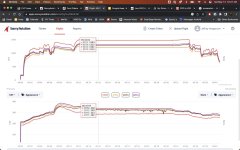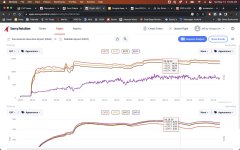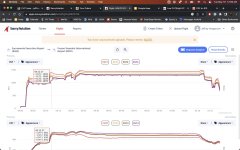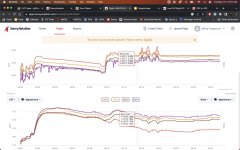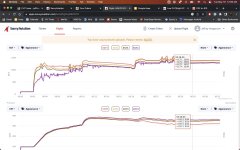I own an RV-7A with a Lycoming IO360. It has a slick impulse mag on the left and a Pmag on the right. TT on engine and airframe is roughly 600 hours. I have a Dynon engine monitoring system with CHT and EGT probes on all four cylinders. I purchased the plane in April 2022. I am not a builder and not a mechanic. My expertise in mechanical/engine related stuff is very low. I am grateful for your help and patience!
Shortly after purchasing, I had an issue where the #1 CHT and #1 EGT spiked on climb out. I quicky landed and contacted a mechanic who assisted me with blowing out the fuel injector (which appeared clean). This resolved the issue.
A couple of times while flying over the next 6 months, I noticed the #1 CHT begin to drop while #1 EGT began to rise. Both times, I was LoP in cruise. The #1 CHT dropped from about 330 to 280. Both times, the issue seemed to resolve itself by the time I flew next.
When the issue did not correct itself, I took the plane to a mechanic for further inspection.
The mechanic did a boroscope and found the #1 cylinder to be badly "stepped" and the exhaust valve sticking. He sent the cylinder off for a complete overhaul.
I began flying again about 3 weeks ago and have flown 30+ hours since the cylinder overhaul. I completed the recommended break-in procedure. The mechanic also did a one hour run up on the ground per Lycoming prior to my flight break in.
From the very first flight, the #1 CHT was lower than it has ever been and the #1 EGT has been higher. This remains true whether I am running full rich like on takeoff or lean of peak. The cylinder still peaks at the same time as all of the other cylinders (within 0.1 gallon fuel flow) but the temperatures are vastly different than before the overhaul.
Also, at the time of overhaul, the mechanic flushed the fuel lines and blew out and cleaned the number one injector.
Prior to the overhaul, the typical CHT and EGT temps for my 4 cylinders while LoP in cruise were.
#1 CHT: 315
#1 EGT: 1360
#2 CHT: 320
#2 EGT: 1360
#3 CHT: 325
#3 EGT: 1235
#4 CHT: 335
#4 EGT: 1300
After the overhaul, the temperatures I'm seeing while LoP in cruise are:
#1 CHT: 285
#1 EGT: 1440
#2 CHT: 325
#2 EGT: 1215
#3 CHT: 325
#3 EGT: 1260
#4 CHT: 335
#4 EGT: 1300
I read several forums about possible issues that could lead to seeing high EGT and low CHT on one cylinder. I have run a variety of tests and I cannot find the issue.
I did an extended mag check to make sure none of the cylinders went cold. All of the CHTs and EGTs responded in unison during the mag checks. Everything seemed to run smooth on the mag check at 1700 RPM.
The mechanic did a compression check immediately after replacing the cylinder and after 30 hours. The first was 78. The second was 77. He also completed a boroscope after 30 hours and everything looked great on the new cylinder.
The mechanic checked the fuel flow spider and confirmed it is delivering equal fuel to all four cylinders.
All four cylinders are peaking within 0.1 gallon fuel flow.
The mechanic checked that there are no intake or exhaust leaks in the cylinder.
Is it normal to see a significantly lower CHT and higher EGT after overhauling a cylinder? Is there anything else I should be checking?



